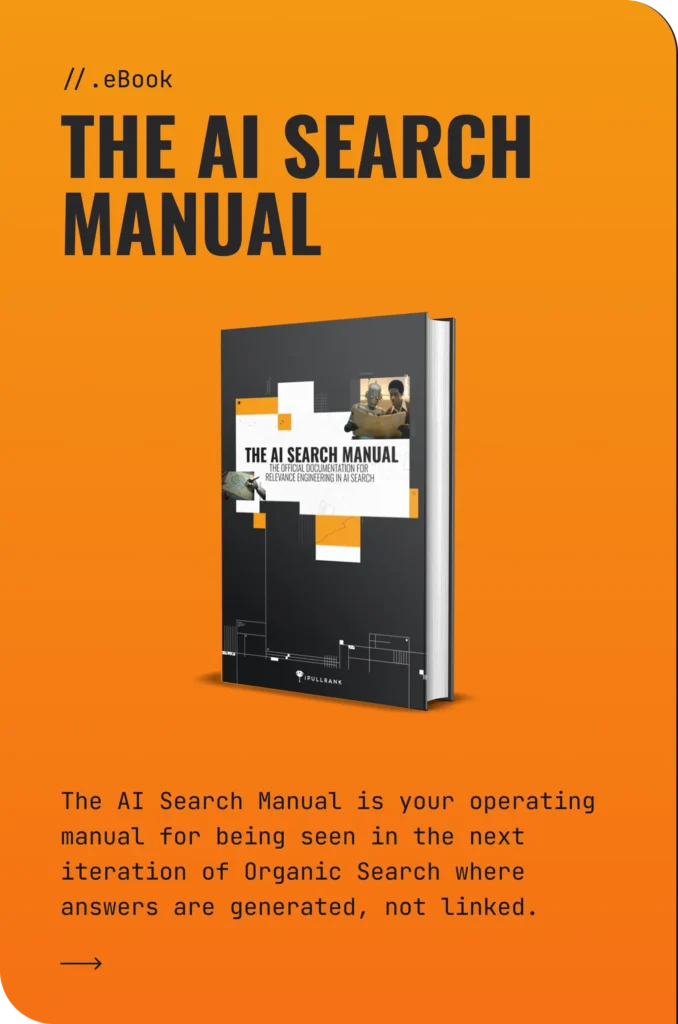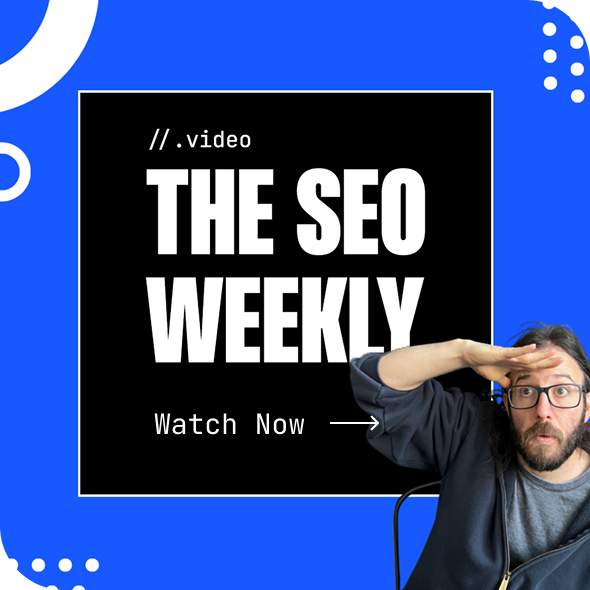In 2026, AI Search will continue to reshape how organizations plan, allocate, and evaluate their budgets. The integration of generative systems into everyday business tools means decisions are being made with more data, more context, and a lot of guesswork.
As AI Search platforms become the new normal, it changes how companies interpret market signals, measure ROI, and prioritize spend. CMOs are under pressure to connect every investment directly to performance. And not just in outputs, but in the insights that drive them.
That shift influences how leaders approach compensation, hiring, and growth. Many organizations ahold their budgets steady as they assess the productivity and efficiency gains AI brings to the table. The goal is stability in a landscape that’s become more predictive and automated by the month.
How you spend the rest of your 2025 marketing budget could directly shape your company’s position in this market.
According to the Willis Towers Watson 2025 Salary Budget Planning Report:
- 38.9% of survey respondents anticipate recession or weaker financial results
- 34.4% have concerns related to cost management (e.g., rising cost of supplies)
- In the US, organizations plan to increase salaries by 3.5% in 2026 – nearly identical to 2025 budgets. Canada, France, Germany and the UK are showing similar trends, with these markets forecasting increases between 3.2% and 3.6%
- Most countries are forecasting salary increases that are relatively flat compared to last year
Gartner has some things to say about how AI will change some trends in the industry, and these are important to consider:
- A prediction that 40% of Generative AI solutions will be multi-modal by 2027 (up from 1% in 2023 – a huge jump)
- Early adoption could potentially lead to a competitive advantage and time-to-market benefits
- Both open-source large language models (LLMs) and multi-modal AI technologies have high impact potential within the next five years
This means your remaining 2025 marketing budget should make room for experimentation with multi-modal AI tools and open-source LLMs, because early adoption could be the difference between leading the pack and scrambling to catch up.

How enterprise budgets will be affected by the growth of AI in 2026
A World Economic Forum survey found that 41% of companies worldwide will “reduce their workforces over the next five years because of the rise of artificial intelligence.” They’ll close locations, lay off employees, and slash budgets.
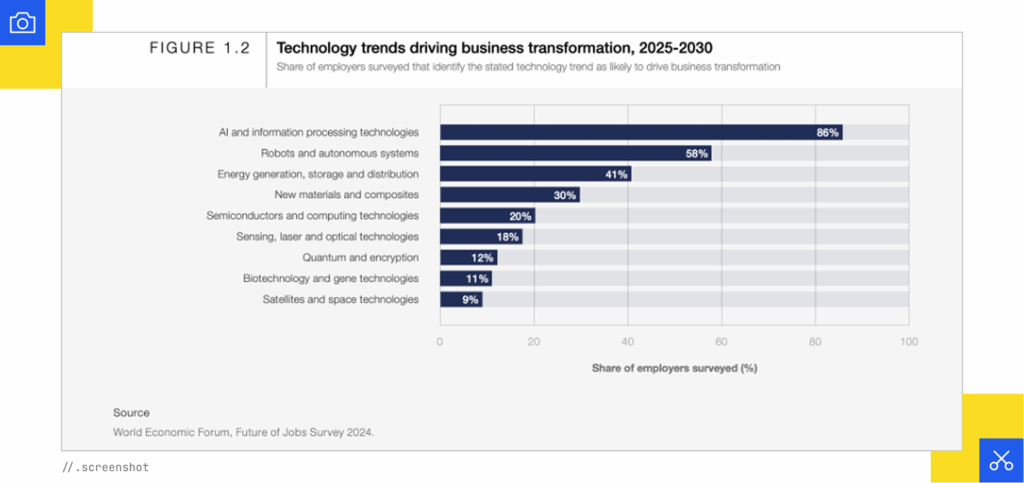
Bain found that “businesses are facing a growing shortage of skilled professionals as they race to implement AI”:
- 44% of executives say a lack of in-house expertise is slowing AI adoption
- Demand for AI skills has grown 21% annually since 2019 amid an AI talent shortage likely to persist through 2027
- Compensation for AI skills continues to increase, growing 11% annually since 2019
It feels bleak out there. Headlines that highlight a significant impact on reduced headcount. Marketing is frequently the first to go. But we think that’s a mistake. If anything, we believe it’s more important than ever to upskill your existing SEO team with Relevance Engineering skills.
There’s no getting around it – companies must consider digital platforms and AI as the primary direction of marketing budget.
In 2025, 27% of companies significantly increased their investment in AI. By the end of 2026, 37% expect to replace roles with AI, and many will restructure teams to prioritize automation.
McKinsey released a study earlier this year on how businesses are “rewiring to capture value.”

Their survey shows that AI-related hiring remains steady compared to 2024. Fewer organizations added data-visualization and design specialists but more introduced new risk-focused roles like AI compliance (13%) and AI ethics specialists (6%). Larger companies hired more broadly across AI roles, especially data scientists, machine learning engineers, and data engineers, while smaller firms lag behind.
Although filling these positions is still tough, fewer respondents than in previous years call it “very difficult,” except for AI data scientists, who remain in high demand – half of AI-using organizations say they’ll need more than they currently have.
Marketing departments are already outdated, and the companies that treat AI search as a passing fad are about to pull a Blockbuster. As search shifts toward generative systems like Google’s AI Overviews and ChatGPT, visibility is no longer about rankings or keywords but about engineering relevance across AI ecosystems.
The solution: evolve your SEO team into a GEO (Generative Engine Optimization) team, staffed with hybrid roles like Relevance Engineers, Retrieval Analysts, and AI Strategists. These specialists design, structure, and measure content the way AI systems understand it – through semantics, embeddings, and information architecture.
While the fundamentals of SEO still matter, the next phase of organic growth is about building systems that make your brand the default answer inside AI-driven search experiences.
Continue with the tired marketing playbook of the past and you’ll struggle.
Funnel your end-of-year marketing budget into the same old digital ads, and you may have very little to show for it. The same goes for outdated SEO approaches. We’ve already seen what happens when brands treat search like a side project: when disruption hits, they fall behind.
That’s why the smarter play today is to future-proof your content for AI-driven, and we’re already seeing some great results on our end.
Recently we helped a major client in the mortgage industry achieve a 27.4% Quarter-over-Quarter 7-figure revenue increase, powered by a 78% increase in leads.
And for a client in the FinTech space, our content engineering optimizations delivered significant bottom-line growth. Over an 8-month period, we more than doubled their organic traffic (a 101% increase!) and drove a 154% increase in sign-ups, proving the impact of our content optimizations.
When AI engines rewrite the rules, CMOs can’t just obsess over keyword rankings. The real goal is to make content extractable, citation-worthy, and relevant in AI outputs, whether that’s an AI Overview, a ChatGPT response, or a Perplexity answer.
That requires Generative Engine Optimization (GEO) and Relevance Engineering (r19g): structure content so machines can actually use it, embedding authority signals, and diversifying formats across text, video, audio, and UGC.
Keep your foot on the gas as competitors try to figure out the new playbook, and when the next market shift comes you’ll be the brand AI engines can’t ignore.
Why It’s Still Worth Investing in GEO and SEO (Even with Smaller Teams):
- AI adoption = new markets: As AI search expands, brands with GEO capabilities will control visibility across dozens of new discovery channels, not just Google.
- Competitive moat: With 97% of SEOs unprepared for this shift, early movers gain an enormous advantage in shaping AI’s understanding of their brand.
- Revenue efficiency: GEO reduces dependency on paid channels by making content discoverable across AI assistants, search modes, and recommendation systems.
- Scalable expertise: Relevance Engineering uses automation, NLP, and data science to do more with smaller, smarter teams—critical in leaner workforce environments.
- Future-proof hiring: Demand for AI-literate marketers and engineers is exploding (up to 2,000% growth in key roles). Training or hiring for GEO now avoids costly catch-up later.
- Financially sustainable: Companies that integrate GEO into existing SEO frameworks maximize current investments while positioning for long-term relevance in AI search ecosystems.
How enterprises handle end-of-year marketing budgets
It’s common for enterprises to take an up-or-out approach to their business. It’s no surprise that many enterprises take a use-it-or-lose-it approach to budgeting as well.
Let’s be honest.
Departments and business units are in constant competition with each other. There’s an internal struggle for resources that drives department spending.
- Retain the current budget. If your end-of-year budget is unused, you’ll lose it. It’s also likely that next year’s budget will be lower; it becomes difficult to justify an increase when your department failed to use last year’s budget productively.
- Increase the current budget. A budget increase means your team has to deliver more value. Departments that are hungry for growth need to (a.) justify their current budget and deliver more value, and (b.) produce a strong justification (via forecasts, projections, surveys, etc.) and outline why your budget needs to be increased.
- Defend against internal competitors. The internal conflict between departments (e.g., sales and marketing) is a common issue. The sales department thinks marketing isn’t producing enough leads; they feel they can do a better job, so they ask for a bigger budget. These internal conflicts are often the results of operational silos and turf wars, but this kind of competition produces rivalries and turf wars all on their own.
CMOs are always under an enormous amount of pressure.
Thanks to our economic climate, and the uncertainty in the coming year as AI explodes, that pressure has only grown.
How do CMOs distribute their end-of-year excess marketing budget?
Gartner’s 2025 report, Marketing Budgets: Benchmarks for CMOs in the Era of Less, shows some surprising insights on CMOs’ approach to budgeting.
“Successful CMOs will lean in to disruption, in how they approach marketing strategy development, how they lead their function and collaborate cross-functionally, and how they drive marketing innovation. As operational interdependency has become the new norm, CMOs need to focus efforts where collaboration drives strategic impact and consider where emerging technologies (like AI) add to the strengths of their marketing team to deliver growth and cement marketing value.”
So what does that mean for CMOs with dwindling budgets?
“Breaking it down to the fundamentals, you need to define what the right ‘less’ looks like, accounting for the consequences of your trade-offs. More with less is about leaning in to your investments, ensuring they deliver the highest possible yield.”
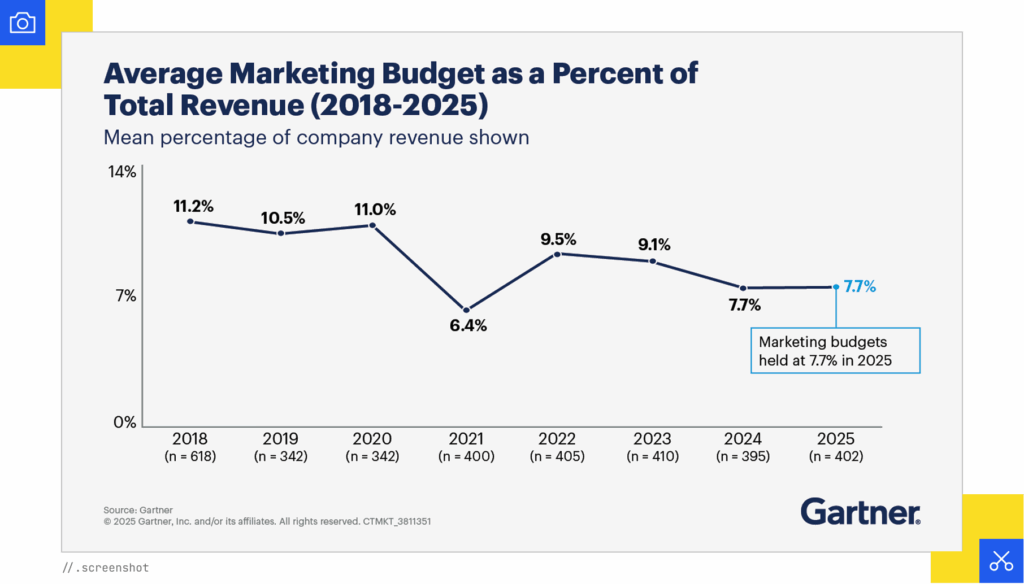
So how will CMOs adjust their budget planning?
You know the answer.
They’ll work to accelerate growth.
If these CMOs are bullish on their ability to generate results in a moving target market, theymove forward. They’ll invest their marketing dollars aggressively. Smart CMOsplace their dollars in channels that produce strong short- and long-term returns.
What about end-of-year budget distribution?
Smart CMOsspend their end-of-year budget on initiatives likely to produce long-term value, giving them a jump in the upcoming year. They focus their attention on the channels thathelp them to produce more with less.
Should you throw your excess budget toward advertising?
It’s easy, low-hanging fruit.
A shot of general advertising would immediately drive traffic to your offerings and produce quick, short-term gains. That’s part of the problem, though. Everyonesees this effort for what it is, an attempt to exhaust your budget before it expires.
So, what’s the problem with that?
If you’d like to persuade the C-suite to increase your budget, advertising comes with a list of problems.
Well, why not?
- Customers don’t like advertising
- Customers don’t want to see advertising
- Customers don’t trust advertising
- Customers don’t need advertising
We use paid media because it’s effective in the right hands and an indispensable part of a balanced marketing plan, but a haphazard approach is throwing money away.
We know paid media works – it’s alluring due to the near-immediate response and reliability. That’s also the problem; it’s necessary, but there’s no compounding. When you turn it off, everything stops.
And we know Google willtest out AI ads in AI Mode in Q4 – they sent out a one sheet for testing in Q4 – but we don’t know how effective AI-driven advertising will be. (See more on this from Garrett here.)

Optmyzr did a PMax study – Evaluating Popular Strategies For ROI – and the results show that traditional digital advertising is going to change pretty radically with the changes related to AI.
- PMax underperforms when mixed with other campaign types; siloed campaigns get auction priority.
- Best performance: multiple campaigns with a single asset group (ROAS leader)
- Feeds, exclusions, audience signals, and search themes often hurt or flatten results
- Success requires at least 60 conversions/month – low-volume campaigns struggle
- Text-only assets look “best” on paper, but video is the real creative workhorse
- Heavy PMax spend (50%+ of budget) boosts ROAS but can weaken CPA/conversion rates
- Human bias (exclusions, over-targeting, cluttered assets) usually reduces performance
What’s a better option?
Follow this three-step framework to maximize the value you receive from your end-of-year budget.
- Assess your goals, current projects, and portfolio in relation to the growing changes with AI, Generative Engine Optimization (GEO), and new content strategy
- Ensure your investments are linked to the company/marketing strategy
- Optimize your projects and campaigns to maximize returns
What opportunities can be maximized?
The opportunities from end-of-year Content and SEO/GEO
We talked about paid media; now let’s talk about owned media.
Content and organic search are wonderful because the rewards compound. The value we receive today continues indefinitely into the future, frequently with minimal maintenance requirements.
Here’s an example.
- Let’s say you create one 10x post.
- This single post generates $750 of value each month.
- Your team capitalizes on this and produces a series of ten posts, each earning $100 per month.
- At this point, your monthly total is $1,750 per mo.
- You reinvest, generating 50 posts that earn $100 per month. ($6,750 per month)
- You repeat the process, producing 500 posts that earn $100 per month + 20 10x posts earning $750 per month
- At this point, your monthly total is $65,000 per month or $780,000 annually.
- These small numbers demonstrate the point.
Here’s the thing.
This doesn’t include the value you receive from organic search, including growing AI Search using LLMs.
The old ROI formula breaks down in the age of AI Search. The way content is retrieved, parsed, and synthesized has changed, and so has the value equation.
Because what we know about ranking for keywords has basically been thrown to the wolves. We operate in an environment where the ten blue links are no longer the Holy Grail.
We need to create for agentic AI – a variety of LLMs act as search engine user agents. They pull data from across the web to return a ChatGPT response, a Claude or Perplexity answer, a “conversation” between your potential client and an AI service.
This completely changes the game.
The old keyword-first mentality is basically obsolete. CMOs can’t just ask their teams to “rank for X keyword” and call it a day because the LLM doesn’t care about that anymore. Instead, AI engines are retrieve content based on whether it can be extracted, summarized, and trusted in response to a conversational query.
The shift to Generative Engine Optimization means CMOs need to think like machine trainers, not just marketers. AI engines reward clarity, structure, and corroboration.
That’s why brands need an omnimedia strategy – meaning an approach that considers every place you might show up online. Not just your website, but your content across all formats and platforms, including owned, earned, and shared media. It’s about publishing in a way that ensures your ideas exist in every format the system can see and reuse. That includes video, audio, data, and text. Sometimes that means refreshing old posts with richer media. Other times, it means creating new content designed to travel across multiple channels and modalities from day one.
An omnimedia content audit helps identify those gaps, and it’s one of the smartest ways to use end-of-year budget if you want your content to stay visible in AI-driven search results.

Content has to anticipate synthetic queries (the dozens of rewrites and follow-ups that AIs spin off from a single prompt) and be formatted so the model can easily map it to the right context.

CMOs should invest in frameworks like semantic markup, entity-rich copy, omni-format publishing (text, video, audio, UGC), and Relevance Engineering (r19g). These are the new prerequisites for discoverability.
Stop thinking in keywords and start thinking in citations.
Build content ecosystems that can survive AI’s slicing and dicing. Measure presence in AI Overviews, ChatGPT citations, and LLM outputs just as carefully as you used to measure organic rankings.
And budget for multidisciplinary content teams that combine SEO, data, PR, and UX, because optimizing for AI search is less about “ranking higher” and more about being the source AI engines can’t ignore.
Let’s look at an example: Imagine you’re in the market for an Aventon Ebike. Like this:
Results

The old way was to slice keywords into neat little clusters – “Aventon bike,” “Aventon financing,” “Aventon vs. competitor.” That kind of portfolio thinking made sense when Google was matching strings to strings.
But AI Search platforms are looking for more than just your exact keyword. They’re not looking for exact matches; they’re looking for clean, extractable answers they can drop into a summary.

This is why instead of just building keyword lists, you want to include a query fan out, which indicates the various related searches that Gemini probabilistically determines what would be related to the original search.
- Build keyword portfolio with a keyword matrix
- Think in terms of the questions an AI agent might spin up around your brand:
- Comparisons
- Dimensions
- Financing
- Pros/cons
- Competitor mentions
- Package your content so each of those questions has a short, structured, and authoritative passage ready to be cited
The “customer intent” is still there, but now it’s parsed through synthetic related queries and model-driven reasoning, not keyword counts.
This means your analysis framework shifts. Persona insights still matter, but they inform what kinds of passages you need to create, not what keyword variations to stuff.
Content-centric audits should look at whether your copy is chunked, schema-tagged, and semantically rich enough to be retrievable.

Analytics need to track citations, prominence, and assisted conversions, not just volume.
Competitive analysis should assess whose content is actually being cited in AI outputs, not who’s “ranking.”
Directional mapping is now about aligning extractable passages with potential AI questions, not keyword gaps.
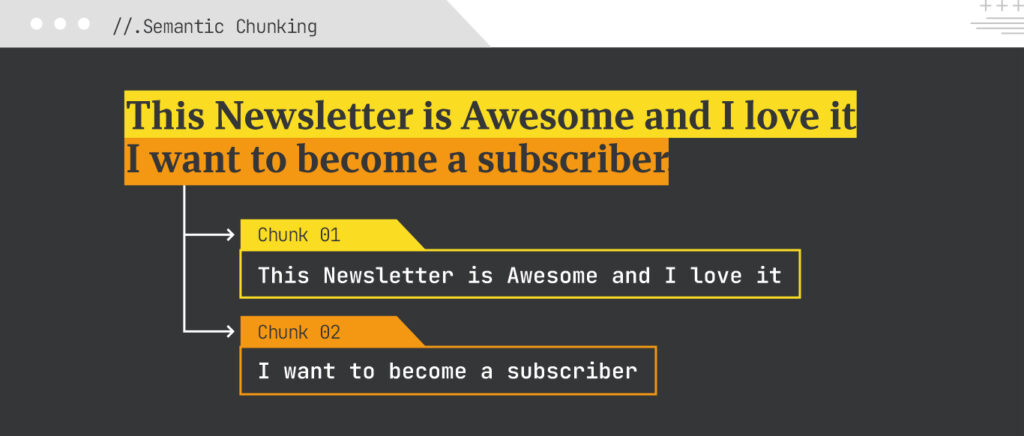
The endgame is the same: drive revenue, build authority, and anchor your brand in the conversation.
But the mechanics have changed.
You’re no longer optimizing for the spider. You’re optimizing for the summary.
Based on these new search parameters, you probably need to examine your current content closely. You should be able to prioritize the opportunities available to your business via search.
If you’re going to evaluate your keyword portfolio, you’ll want to do it across these five dimensions:
- Persona-Based: Look closely at your current and prospective customers to uncover the kinds of questions they’re actually asking. Comparisons, pros and cons, financing details, competitor alternatives, how-to’s, etc. These intents should guide what passages you create for AI engines to cite.
- Content-Centric: Audit your existing content not just for topics, but for how well it’s packaged. Are answers short, structured, and scannable? Do you have schema markup, clear headings, and entity-rich copy that makes your content easy for LLMs to extract?
- Analytics-Based: Stop obsessing over keyword volume and CPC. Instead, measure where your content is being cited in AI outputs, how often you appear in AI Overviews or ChatGPT responses, and what those assisted visits or conversions look like.
- Competitive: Don’t just check who’s ranking. Look at whose content is surfacing in AI summaries and citations. Which competitors are already shaping the narrative in AI Mode or Perplexity answers, and what kinds of passages or formats got them there?
- Directional: Map extractable passages, not keywords, to target queries. Each core question or theme should have a page, section, or snippet designed for easy AI consumption. Then track whether those passages are being picked up, cited, and driving results.
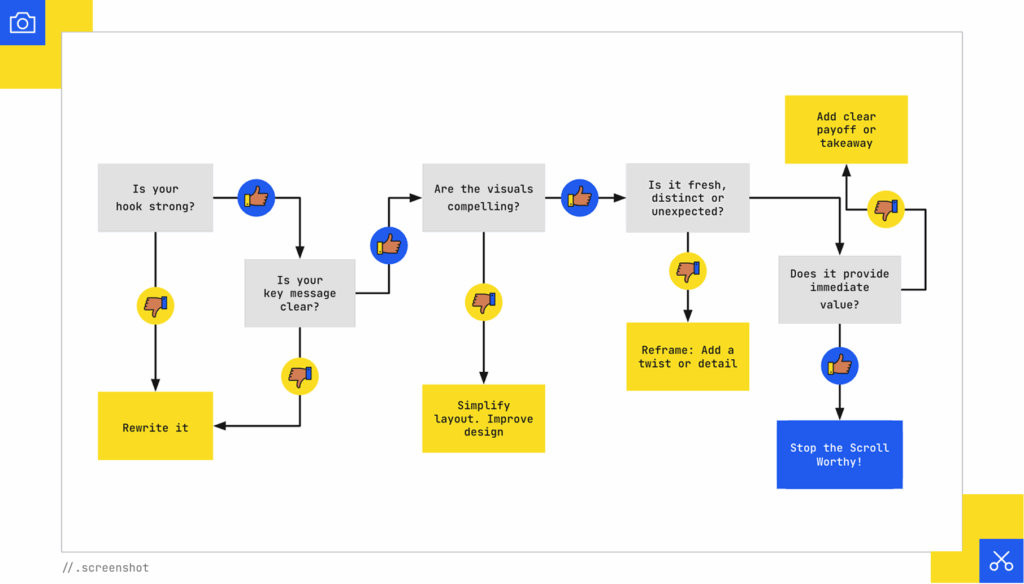
Update your keyword portfolio (with help) + do a complete omnimedia audit
iPullRank can help you build a content engineering strategy powered by a keyword portfolio that:
- Fuels revenue by making your content the go-to source for AI engines and LLMs
- Establishes authority with clear, extractable answers across your core themes
- Anchors your integrated marketing with passages designed for omni-format visibility
Instead of chasing keywords, you’ll get a keyword portfolio that shows where your biggest opportunities are, segmented by customer intent, use case, and value, so your content shows up when AI engines go looking.
A more complete solution includes multiple prongs that address keywords as well as overall content, and not just on your website.
The Keyword Portfolio
This is essentially your roadmap to how people actually search for your business. It’s a living document that shows what your audience wants, how they ask for it, and where your brand can show up. We pull together the data that really matters:
- How and where people search for your products or services
- Which types of content (articles, videos, AI results) appear for each topic
- What’s performing well and what’s not
- How your keywords connect to different goals, audiences, and use cases
- Your Relevance Score – which shows how well your current content matches real search demand, plus shows performance data like clicks, rankings and engagement.
The Keyword Matrix
The keyword matrix takes things a step further.
- Predicts how AI search systems like ChatGPT or Google’s AI Overviews might expand a single query into related questions and topics
- This helps your brand show up not just for one search, but across all the connected ideas AI uses to build an answer to inform any optimization needs
The Omnimedia Content Audit
Once we know how people are searching for you and how AI interprets it, we use that data to review all your content.
- This includes content not just across your site, but also all social channels, video, and more
- We identify where you’re visible and where you’re not
- We look at what formats perform best for your audience and for AI systems
The Omnimedia Content Plan
This is your actionable roadmap for creating and refreshing content that performs everywhere your audience (and AI) is looking.
- Fortifies Content Resonance
- Strengthens coverage across all discovery surfaces with content models and governance frameworks
- Includes an AI Strength Measurement Plan that tracks input metrics, channel metrics, and performance metrics across AI Search surfaces
Together, these deliverables give you a unified, data-driven strategy that connects how people search, how algorithms interpret, and how your content performs, all grounded in the realities of AI-powered discovery.
CMOs are under a lot of pressure to perform. Marketing teams need to demonstrate they’re producing value with the budgets they already have. The compounding value of content and organic search gives you a clear way to demonstrate your value.
Properly structured GEO and Relevance Engineering campaigns can deliver value in the short and long term.
iPullRank has a comprehensive AI Search Strategy Plan that incorporates all of the above where we design and execute a strategy for your brand. Our experience has shown that these strategies earn measurable visibility across AI Search platforms, including Google (AI Overviews and AI Mode), ChatGPT, Perplexity, and others.
This bespoke program is only available for a select number of clients in 2026 – if you’re an enterprise brand leader looking for the insights, plans, audits, and metrics to win in the next era of search, schedule a call today.
Using your end-of-year marketing budget productively
What can you do to maximize the value you receive from your end-of-year budget? Is there a simple way to determine where you should focus your attention first?
As a matter of fact, there is.
Here are five options to maximize the gains you receive from your end-of-year budget.
Improve Page Performance via Relevance Engineering
Let’s be honest – traditional content audits are a grind. Pull the data, check rankings, eyeball traffic, and make a judgment call that may or may not align with your actual business strategy. That approach used to work when SEO was about keywords and clicks. But in the AI Search era, performance is about what aligns, not what ranks.
Content performance now depends on semantic precision. The question isn’t “Does this piece get traffic?” but “Is this piece contextually aligned with what our brand should be known for, and is it structured for machines to understand it?” That’s where Relevance Engineering comes in.
Instead of relying on gut instinct or traffic metrics, Relevance Engineering blends semantic embeddings (AI-generated representations of meaning) with SEO and content metadata to evaluate and rebalance your content library objectively. It’s a smarter, scalable way to identify what deserves to stay, what to update, and what to retire, with no guesswork required.
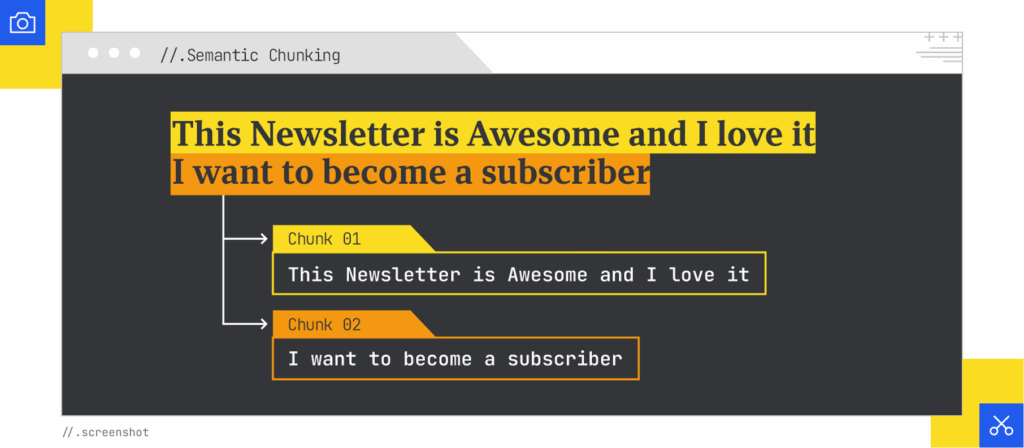
How Relevance Engineering Improves Page Performance
By using this framework, you can quantify alignment between your existing content and your business’s strategic focus – across thousands of URLs. The process identifies which assets reinforce your topical authority and which dilute it. The result is a tighter, more relevant content ecosystem that signals expertise to both users and AI-driven search systems.
The framework typically includes:
- Content Relevance Scoring: Use AI embeddings to measure how semantically close each page is to your organization’s core topics and business priorities.
- Performance Layering: Combine those scores with real-world SEO data (clicks, impressions, conversions) and content metadata (publish/update dates) for context.
- Decision Modeling: Apply an evidence-based “Keep / Review / Prune” model to categorize each page and prioritize updates or consolidations.
- Optimization Execution: Refresh or merge high-relevance but underperforming assets, redirect content with no strategic fit, and republish top performers with improved structure and metadata.
Why It Works
Relevance Engineering eliminates the subjective, time-consuming slog of manual pruning. It replaces opinion with evidence, merging semantic analysis and SEO insight into one defensible framework. This approach allows teams to:
- Cut large content libraries efficiently without losing valuable pages.
- Focus on content that reinforces brand authority and search intent.
- Improve sitewide semantic relevance and focus — often by measurable percentages.
- Strengthen AI Search visibility by ensuring content aligns both topically and structurally.
In practice, this isn’t just about cleanup. It’s about creating a leaner, sharper content portfolio that communicates expertise at scale — to audiences, search engines, and large language models alike.
Improve AI Visibility
If you’re part of an enterprise, your website probably has more content than anyone wants to admit. In the old world, we worried about crawl budget. In the new world, the issue is less about how many pages Googlebot can crawl and more about whether AI engines and LLMs can extract, trust, and reuse your content at all.
Think of it this way: AI systems don’t waste time “crawling.” They pull from massive indices, trusted ecosystems, and structured passages. If your content is bloated, repetitive, or buried in messy layouts, it simply won’t get cited.
Visibility depends on whether your pages are structured for retrieval, not just ranking.
Why your AI visibility matters:
Generative engines reward precision. Pages with clean structure, clear entities, and scannable passages are the ones that show up in AI Overviews, ChatGPT citations, and other LLM outputs. Pages with duplicate fluff or vague content are largely ignored.
The shift is from “optimizing for bots that crawl” to “optimizing for models that extract and synthesize.”
There’s a limit to AI’s patience, too. If your site is slow, unstructured, or throws errors, the models move on. If your passages are buried or irrelevant, they’ll pull from Reddit or Wikipedia instead.
Addressing AI visibility issues is a straightforward way to future-proof organic performance.
What you need:
- Relevance audit, part 1: A qualitative + quantitative review of all your content to spot overlap, thin passages, or near-duplicates that confuse AI engines. The goal isn’t just to reduce clutter but to consolidate authority into passages that are extractable and citation-worthy.
- Relevance audit, part 2: Instead of a crawl log, you need to know how and where your content surfaces in AI engines. Are you being cited in AI Overviews, Perplexity, or ChatGPT? Which passages get pulled, and which pages are invisible? This audit identifies the extractability gaps.
- Semantic/AI-focused site audit: A deep review of your technical, content, and entity signals to pinpoint why models skip you. This goes beyond page speed or title tags and looks at schema, structure, embeddings, and whether your content is aligned with real-world queries and synthetic variations. A key part of this is mapping content into semantic triples (subject → predicate → object), so that AIs can interpret relationships and reuse your passages with confidence.
- Relevance Engineering (r19g) recommendations: A prioritized roadmap to maximize AI visibility, including restructuring content into extractable chunks, layering semantic markup, fixing broken signals, and ensuring your brand shows up in omni-format ecosystems (site, video, UGC, PR).
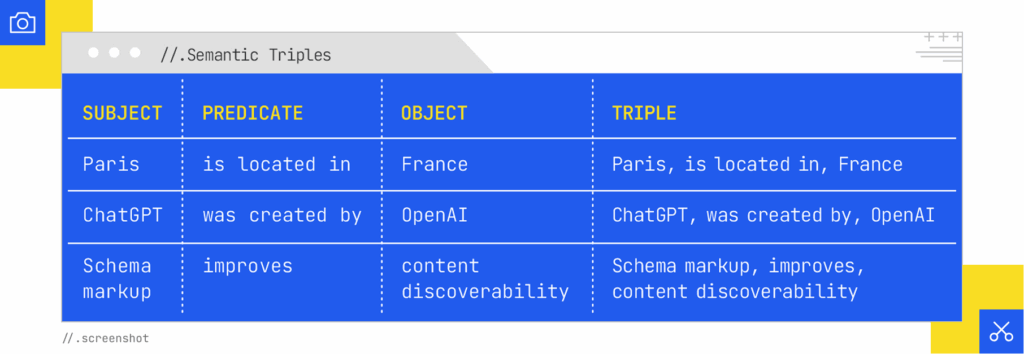
Eliminate Redundant Signals for AI
When your content competes with itself in AI engines, you’re erasing your own visibility. Generative search cares about which passages are clear, unique, and trustworthy enough to cite.
Redundant or near-duplicate content means your brand’s authority gets diluted, and the AI grabs whatever looks simplest, often from your competitors.
Redundancy problems include overlapping pages that say the same thing, messy variations written for keyword padding, boilerplate-heavy CMS templates, and scraped content that outperforms your original.
When your content isn’t distinct, your visibility, credibility, and conversions all drop. The revenue leak is real: AIs won’t pick you if your signals are fuzzy, and users won’t convert if they don’t see you in the answer box.
What you need:
- Entity & signal audit: Instead of a backlinks check, focus on whether your content distinctly represents the right entities, relationships, and context. This ensures AIs map your pages to unique concepts rather than lumping them together or skipping them entirely.
- AI visibility testing: Run your content through AI Overviews, ChatGPT, Perplexity, and other LLMs. Which page gets cited? Which gets ignored? Use those results to restructure, redirect, or merge redundant content into authoritative, scannable assets.
Optimize for AI Readability & Relevance
Page speed and UX still matter, but in an AI-first search world, what really counts is how easily your content can be extracted, trusted, and reused by generative engines. A slow, messy, or unstructured page frustrates users and makes your content harder for AI to parse, synthesize, and cite.
Generative Engine Optimization shifts the focus from ranking factors to relevance signals. AI systems need short, scannable passages, clear entity relationships, and unambiguous formatting.
If your content is buried in design bloat, endless scrolls, or vague language, the engines skip you. Clean structure + fast delivery = higher odds your brand shows up in AI Overviews, ChatGPT answers, and other LLM-driven citations.
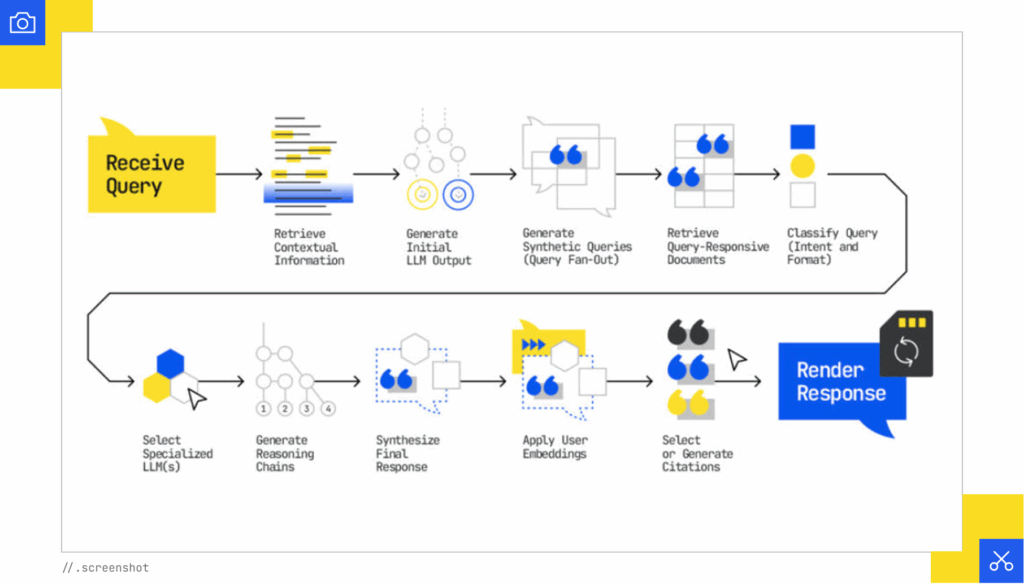
Think of it this way: speed and structure are about making sure machines see your content as usable fuel for their answer rather than focusing on better rankings anymore.
What you need:
- Relevance Engineering audit: A full review of how your site’s content is chunked, structured, and labeled for AI retrieval. This goes beyond page speed and includes clarity, semantic markup, and whether AIs can extract your passages without confusion.
- Entity & context recommendations: Specific guidance on adding schema, entity-rich copy, and layout-aware formatting that aligns with AI’s retrieval and synthesis pipelines. This ensures your content is mapped to the right context when engines assemble answers.
AI performance monitoring: Instead of just tracking load times or bounce rates, monitor how often your pages surface in AI Overviews, LLM citations, and multimodal queries. Treat this as your new “core vitals” for AI-era visibility.
Why you need an agency to maximize your opportunities
Companies are preparing to make big changes in how they run marketing, with a heavy focus on AI knowledge. The scope of this is typically too much for an in-house team to handle on their own.
This is exactly why you need an agency.
So let’s get the obvious stuff out of the way. When you work with an agency, you’re getting a full-stack team of specialists who already know how to operate as a unit. No onboarding, no training wheels. For the cost of one in-house hire, you get a mature team focused entirely on your outcomes, not politicking for the C-suite.
You know that. I know that.
What you may not know is that the real difference is both bandwidth and AI fluency plus relevance expertise. A strong agency in 2025 isn’t just running campaigns; it’s reverse-engineering how AI engines read, cite, and reward content.
If your agency knows what it’s doing, it should bring:
- Proven GEO frameworks: Tested playbooks for making content citation-worthy in Google AI Overviews, ChatGPT, Claude, and beyond.
- Crisis & recovery protocols: Response plans for when AI search tanks your traffic, citations vanish, or a model spits out your competitor instead of you.
- Cross-disciplinary operators: Specialists in SEO, GEO, PR, data, and UX who can work independently but also engineer relevance signals together so your brand gets surfaced across AI channels.
- Proprietary AI monitoring tools: Systems that track where you’re cited (or ignored) across LLMs – the kind of visibility you’ll never get from GA4 or Search Console.
- The edge others won’t chase: The willingness to build structured content, feed AI-friendly formats, and run experiments that most agencies are too slow (or too scared) to try.
In the AI search era, it’s not about “ranking higher.” It’s about being the source the machines can’t skip. That’s the leverage your agency should be delivering.
These details make all the difference.
Imagine walking into your budget meeting with compelling data showing everyone why expanding your marketing budget is the smart play, and being able to speak to the hottest topic in every industry right now – AI.. Management’s decision is obvious if your results continue to compound year-over-year.

Use your end-of-year marketing budget to win
Your end-of-year budget can set your organization up for success in the new year.
But you have to start now.
The expectation is less about economic cycles and more about AI rewriting the playbook. As companies scramble to figure out what AI means for their marketing mix, budgets are shifting in real time.
Investments once locked into traditional SEO or paid channels are being questioned, reallocated, or tested against new AI-driven priorities. The competition for budget is only going to get sharper.
Use your end-of-year spend to double down on content and SEO/GEO strategies that are AI-ready and future-proof, so your visibility doesn’t vanish while everyone else is experimenting.
Create value that compounds.
As we’ve seen your content and search campaigns can produce exceptional rewards, thanks to compounding. Apply your end-of-year marketing budget to the right projects and you’ll find the value you receive from content and search compounds indefinitely into the future.
Do you have an SEO or Content Project that you’d like to invest in with your remaining 2022 marketing budget? Set up a call with iPullRank and earn billions in incremental revenue.

